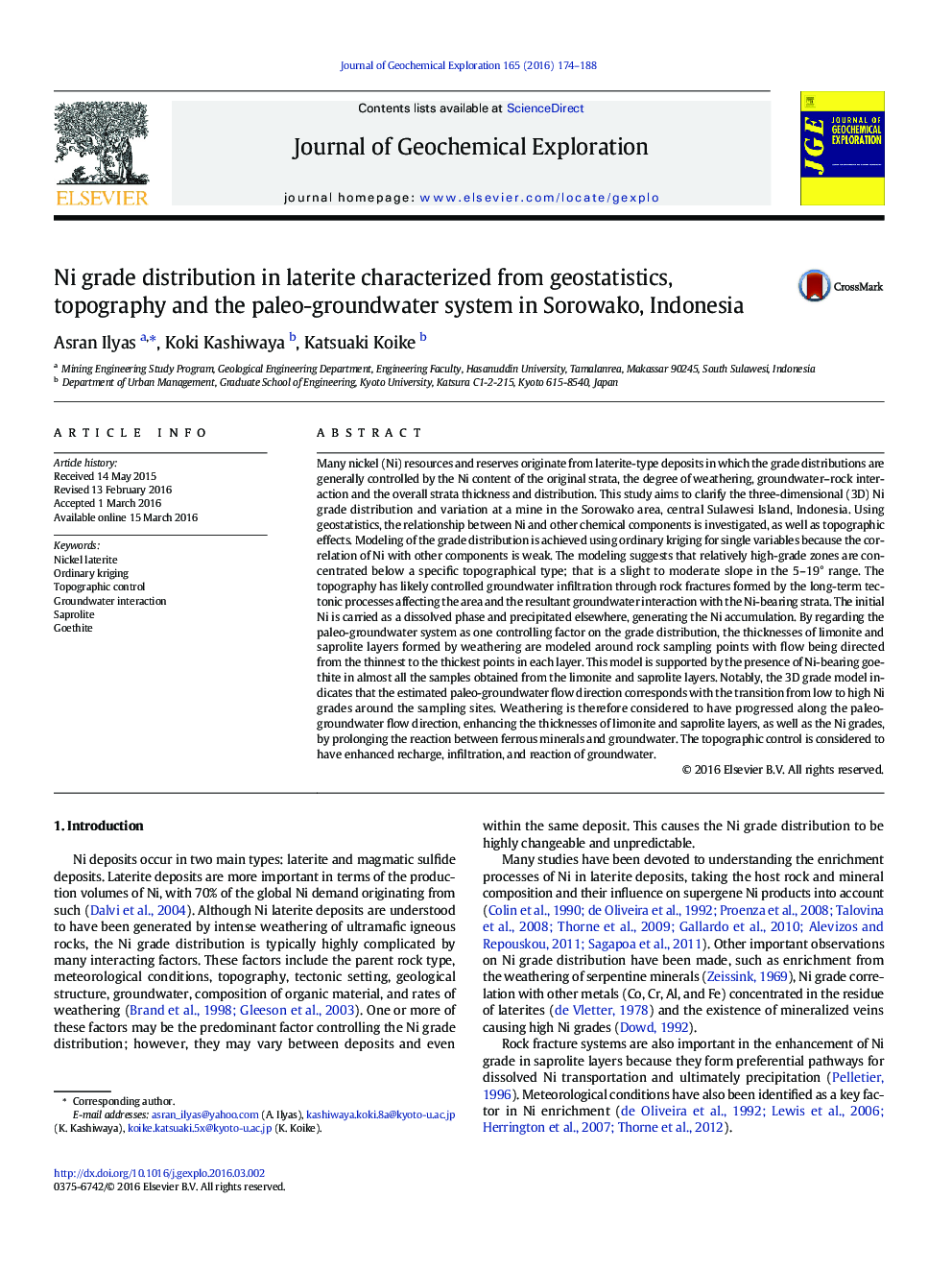| کد مقاله | کد نشریه | سال انتشار | مقاله انگلیسی | نسخه تمام متن |
|---|---|---|---|---|
| 4456934 | 1620894 | 2016 | 15 صفحه PDF | دانلود رایگان |

• Ni grade correlates poorly with associated major elements.
• Three-dimensional spatial model of Ni grade is constructed for the laterite deposit.
• Paleo-groundwater system is elucidated from topography and changes in Ni grade.
• Groundwater–rock interaction has enhanced Ni grades in the saprolite layer.
• Slight topographic slopes are associated with the generation of high Ni grade zones.
Many nickel (Ni) resources and reserves originate from laterite-type deposits in which the grade distributions are generally controlled by the Ni content of the original strata, the degree of weathering, groundwater–rock interaction and the overall strata thickness and distribution. This study aims to clarify the three-dimensional (3D) Ni grade distribution and variation at a mine in the Sorowako area, central Sulawesi Island, Indonesia. Using geostatistics, the relationship between Ni and other chemical components is investigated, as well as topographic effects. Modeling of the grade distribution is achieved using ordinary kriging for single variables because the correlation of Ni with other components is weak. The modeling suggests that relatively high-grade zones are concentrated below a specific topographical type; that is a slight to moderate slope in the 5–19° range. The topography has likely controlled groundwater infiltration through rock fractures formed by the long-term tectonic processes affecting the area and the resultant groundwater interaction with the Ni-bearing strata. The initial Ni is carried as a dissolved phase and precipitated elsewhere, generating the Ni accumulation. By regarding the paleo-groundwater system as one controlling factor on the grade distribution, the thicknesses of limonite and saprolite layers formed by weathering are modeled around rock sampling points with flow being directed from the thinnest to the thickest points in each layer. This model is supported by the presence of Ni-bearing goethite in almost all the samples obtained from the limonite and saprolite layers. Notably, the 3D grade model indicates that the estimated paleo-groundwater flow direction corresponds with the transition from low to high Ni grades around the sampling sites. Weathering is therefore considered to have progressed along the paleo-groundwater flow direction, enhancing the thicknesses of limonite and saprolite layers, as well as the Ni grades, by prolonging the reaction between ferrous minerals and groundwater. The topographic control is considered to have enhanced recharge, infiltration, and reaction of groundwater.
Journal: Journal of Geochemical Exploration - Volume 165, June 2016, Pages 174–188